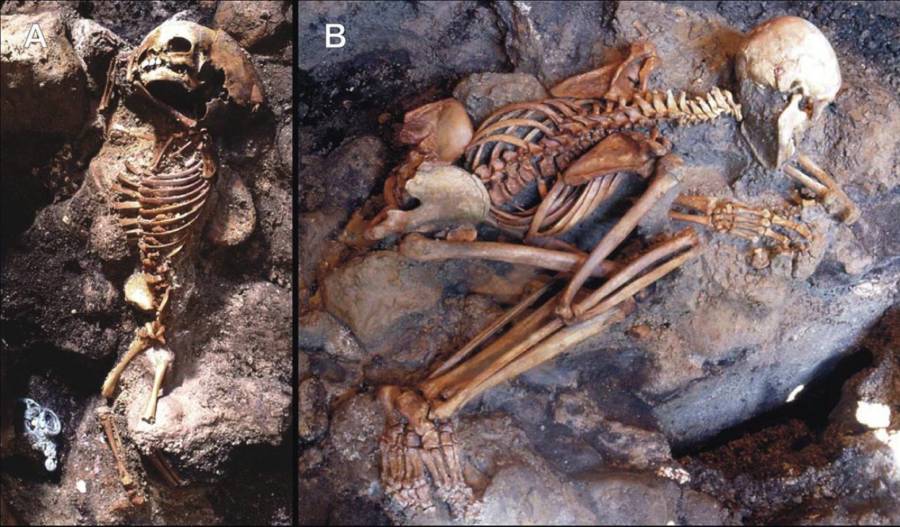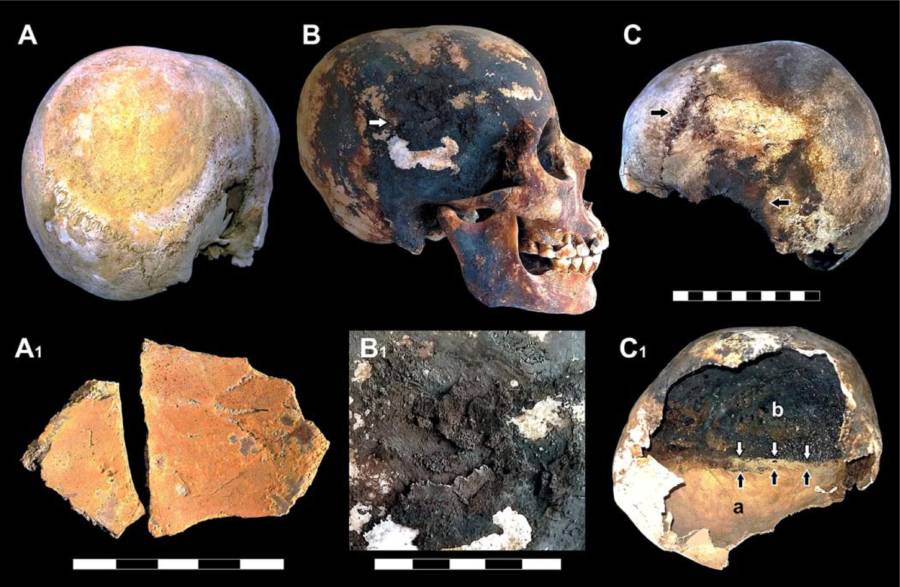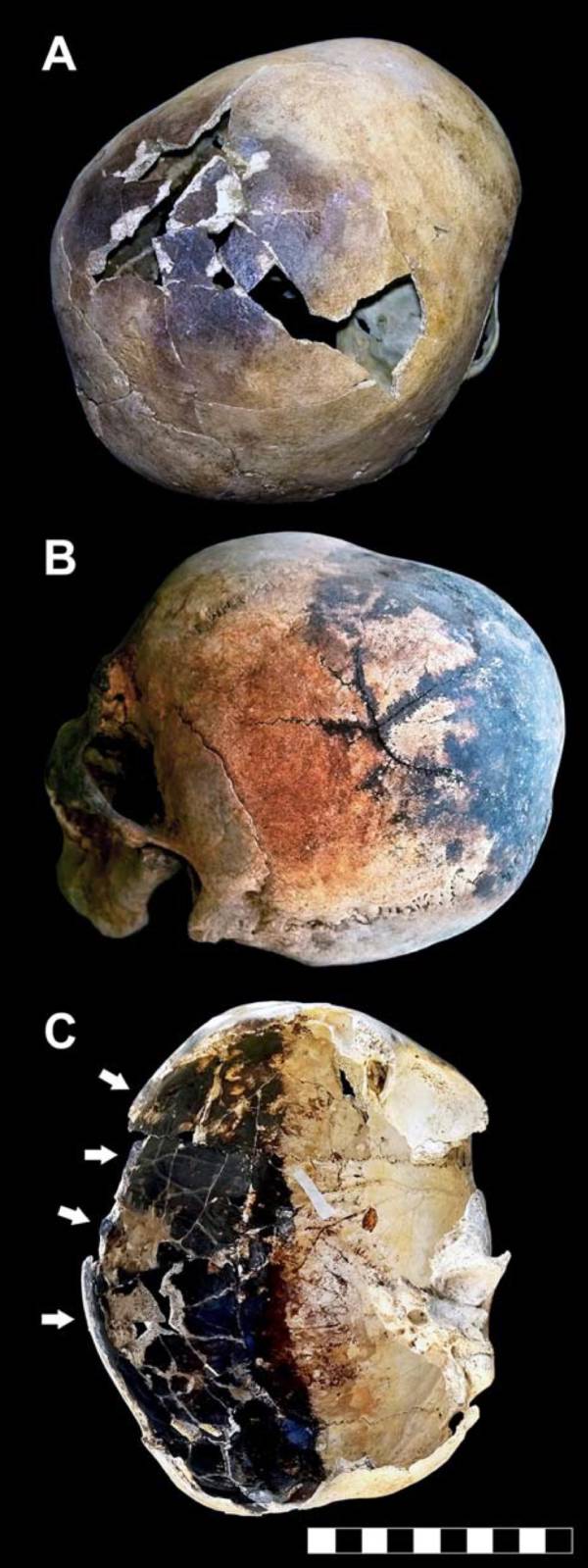Mt. Vesuvius Boiled The Blood And Exploded The Brains Of Its Victims

Petrone et al/PLOS OneA child (left) and a young adult male (right) discovered in the chambers.
Earlier this year, researchers in Italy published a theory that some victims of the Mount Vesuvius eruption died after the extreme heat of the explosion caused their blood to boil and their skulls to consequently explode.

Petrone et al/PLOS OneSkeletal remains from the chambers with red and black mineral residue on them.
When Mount Vesuvius erupted in 79 A.D., it launched volcanic ash, gas, and rocks for almost 21 miles, and for two days molten lava poured out. Those who didn’t evacuate from surrounding cities like Oplontis, Pompeii, and Herculaneum met grisly ends — some even more so than others.
In Herculaneum, 300 people took shelter in 12 waterfront chambers along the city’s beach. They all perished once the volcano erupted and they were trapped inside for thousands of years before a team of excavators discovered them underneath several feet of ash in the 1980s.

Petrone et al/PLOS OneSome of the skulls studied.
To uncover this extraordinary piece of science news, the team studied the victims’ skeletons and found a mysterious red and black residue covering the bones inside the skull and in the surrounding ash-bed where the victims were found.
The residue contained traces of iron and iron oxides, which are created when blood vaporizes.
“The detection of such iron-containing compounds from the skull and the ash filling the endocranial cavity…strongly suggests a widespread pattern of heat-induced hemorrhage, intracranial pressure increase and bursting, most likely to be the cause of instant death of the inhabitants in Herculaneum,” the study said.
The researchers estimated that the temperature inside the chambers must have reached around 500 degrees Celcius (or 932 degrees Fahrenheit), which would cause the blood of anyone inside to boil and their skull to explode.
Several of the skeletons that the team examined had skulls with gaping holes and stains that are consistent with “recurrent skull explosive fracture.”





